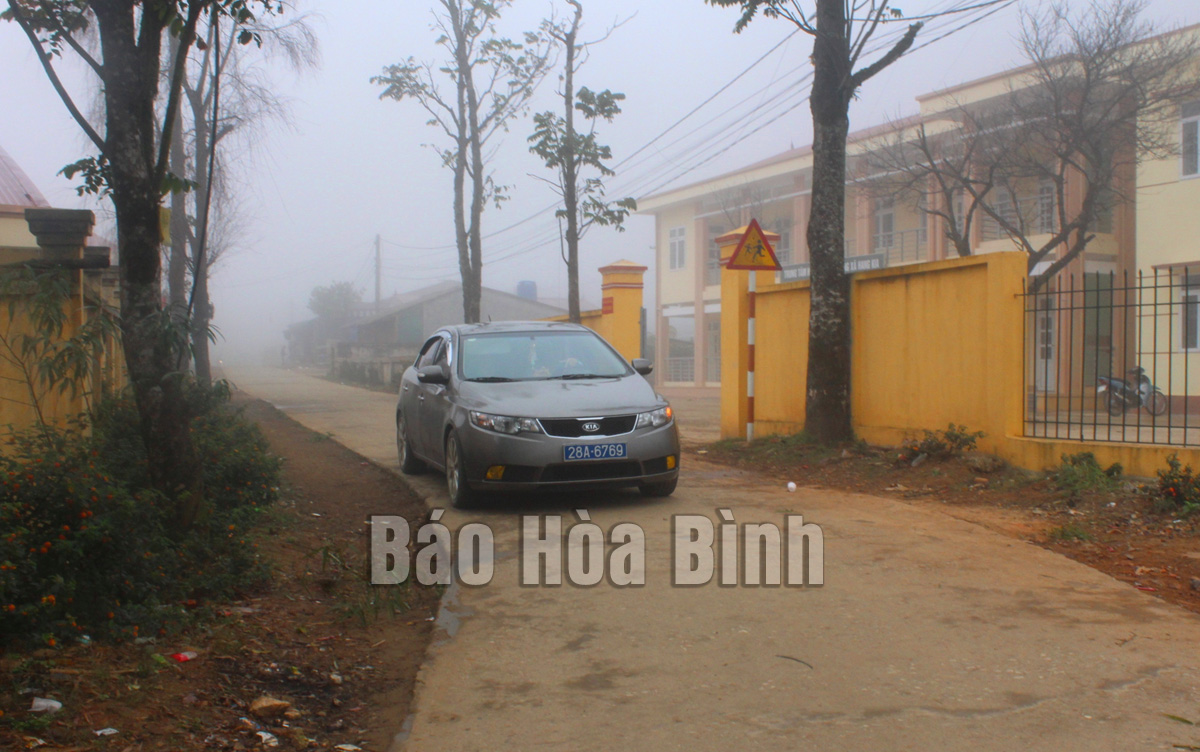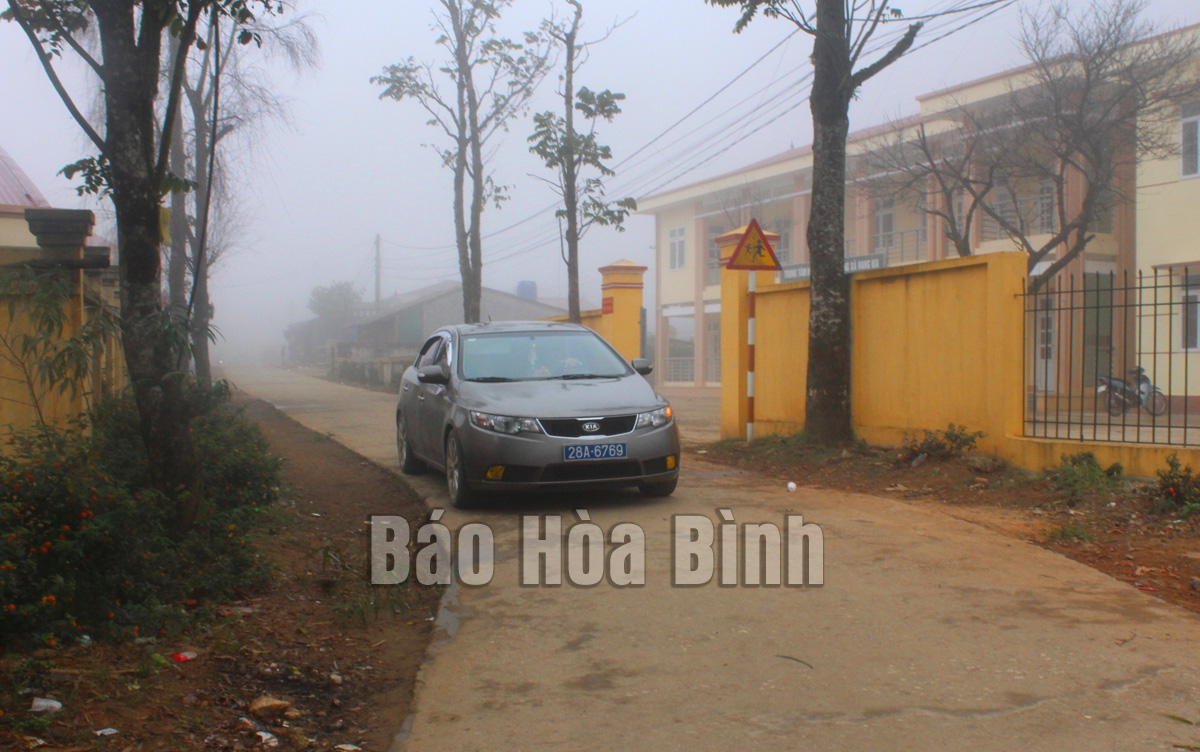
(HBO) - The Party Committee of Hoa Binh province on July 30 issued Resolution No. 03-NQ/TU on leading socio-economic development in the ethnic minority and mountainous areas for the 2021-2030 period in the province (Resolution No.03).
In recent years, Hoa Binh province
has prioritized investment in infrastructure for extremely disadvantaged
communes for socio-economic development (Photo captured in Hang Kia commune -
Mai Chau district).
The resolution’s overall objective is to tap the potential and advantages of
localities in the province, actively innovate and promote economic development,
ensure social welfare, reduce poverty sustainably, gradually narrow the gap in
living standards and incomes of the ethnic minority and mountainous areas
compared to the national average. It aims at reducing 50 percent of extremely
difficult communes, villages and hamlets by 202 and basically having no
communes, villages and hamlets in extreme difficulty by 2030.
The resolution sets out four key tasks: (1) Stepping up dissemination and
mobilisation to all classes of people; considering the implementation of the
resolution a task of the whole political system, a regular and continuous task,
and a criterion for evaluating the quality of grassroots-level Party
organizations and members; and researching specific mechanisms and consulting
methods that suit the situation of each locality. (2) Addressing the shortage
of residential land, housing, cultivation land and water for production and
daily use for people in ethnic minority and mountainous areas; planning,
arranging and stabilizing the lives of people in extremely difficult and
ethnic-inhabited areas and in other places in need. (3) Investing in essential
infrastructure to serve production and life of people in the ethnic minority
and mountainous areas; supporting ethnic minorities that still face many
difficulties; developing agricultural and forestry production, bring into full
play the potential and strengths of the ethnic minority and mountainous areas
to produce goods following the value chain; developing education and training
to improve the quality of human resources, and promoting vocational training
and job generation for young people; preserving and promoting the fine
traditional cultural values of ethnic minorities in association with tourism
development. (4) Praising and honoring role models, promoting the role of
reputable people; disseminating and educating the laws for locals; and applying
information technology to support socio-economic development and ensure
security in the ethnic minority and mountainous areas.
The document puts forward solutions
for effective implementation, including increasing investment in socio-economic
infrastructure in the ethnic minority and mountainous areas; improving locals’
livelihoods; developing production to improve living standards for the ethnic
minorities; improving the quality of education, training and health care;
preserving and promoting the unique cultural identities of ethnic minority
groups; developing and improving the quality of human resources in association
with job creation; ensuring policies on poverty reduction and social welfare;
ensuring political security, social order and safety in the ethnic minority and
mountainous areas; and taking solutions on organization, management and
implementationmechanisms, and on financial resources./.
With an increasingly vibrant and widespread emulation movement aimed at building cultured residential areas and cultured families, Yen Thuy District has been making steady progress toward improving both the material and spiritual well-being of its people, while fostering a civilized, prosperous, beautiful, and progressive community.
Once lacking recreational spaces and community facilities, Residential Group 2 in Quynh Lam Ward (Hoa Binh City) has recently received attention for the construction of a new, spacious, and fully equipped cultural house. The project followed the model of state support combined with public contributions in both labor and funding.
The "All people unite to build cultural life" movement, which has been effectively integrated with Kim Boi district’s socio-economic development goals, is fostering a lively spirit of emulation across local residential areas, hamlets, villages, public agencies, and enterprises. In addition, through the initiative, traditional cultural values are being preserved and promoted, while community solidarity and mutual support in poverty reduction and economic development are being strengthened.
A working delegation of the Hoa Binh provincial People’s Committee led by its Permanent Vice Chairman Nguyen Van Toan on June 11 inspected the progress of a project to build the Mo Muong Cultural Heritage Conservation Space linked to tourism services in Hop Phong commune, Cao Phong district.
Born and growing in the heroic land of Muong Dong, Dinh Thi Kieu Dung, a resident in Bo town of Kim Boi district, in her childhood was nurtured by the sweet lullabies of her grandmother and mother. These melodies deeply imprinted on her soul, becoming an inseparable part of her love for her ethnic group's culture. For over 20 years, this love for her hometown has driven Dung to research, collect, and pass down the cultural values of the Muong people to future generations.
In the final days of May, the Ethnic Art Troupe of Hoa Binh Province organized performances to serve the people in remote, mountainous, and particularly disadvantaged areas within the province. These were not just ordinary artistic shows, but they were the meaningful journeys aimed at spreading cultural values, enhancing the spiritual life of the people and contributing to the preservation of ethnic minority cultural identities.



